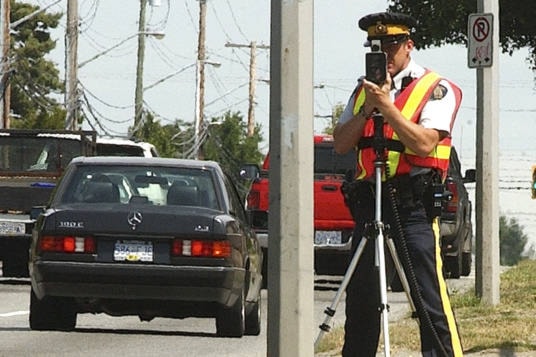Rick Stiebel/News Gazette staff
A two-pronged approach to a plan to reduce the number of speeders on the Malahat should carry more weight with the provincial government, says Saanich Coun. Colin Plant.
While Plant admitted it’s ironic to have a discussion on speeding while the Malahat is plagued by slowdowns resulting from ongoing construction and blasting, he noted, it’s still important to address the viability of interval-based cameras on that stretch of highway before the work is completed. “Any long-term improvements to safety are always welcome,” he said.
Plant, chair of the Capital Regional District’s traffic safety commission, said the commission has approached the Cowichan Valley Regional District about joining with the CRD to petition the provincial government to install interval-based cameras.
The CVRD’s response indicated that more information is needed before a decision can be made, Plant said.
The CRD asked the CVRD this week to schedule a presentation by the traffic safety commission that would provide more detail about the interval-based camera proposal at the next CVRD meeting in September.
RELATED: CRD traffic committee makes proposal to curb speeding on Malahat
Interval-based cameras record licence plates at various intervals to determine the vehicle’s speed.
Plant said research on their use at a problem location in Scotland resulted in reduction of speeding vehicles from 33 per cent to five per cent.
The results from a location in China were even more dramatic, with only two per cent of drivers speeding, down from 50 per cent. The technology was introduced in Ontario and Alberta recently, but there hasn’t been sufficient time to compile data yet, Plant noted. “If you know the cameras are there and you’re going to get a ticket, you’re going to slow down,” Plant said.
Although he is aware that B.C. Attorney-General David Eby has indicated the NDP government is not considering a return to photo radar enforcement, Plant believes interval-based cameras constitute a different approach that is well worth considering.
“It’s not like photo radar where drivers watch for vans that move from one location to another,” he explained. “We want people to know the cameras are there and they need to slow down,” he said.
Plant also believes the provincial government may be more amenable to considering the new option because of the financial challenges currently facing ICBC, pointing out that less drivers speeding means less accidents and less claims.
“Interval-based cameras create changes in behaviour by having the road monitored 24 hours a day.”
The CRD traffic safety commission’s mandate is to improve safety through education and recommendations arrived at by consultation with representatives from ICBC, law enforcement, the coroner’s office, the media, medical health and the public, Plant explained. “We don’t have the capacity to make suggestions based on engineering,” he noted.
The board recently added representatives from the Greater Victoria Cycling Coalition and Walk On Victoria – a pedestrian advocacy group – to provide more diversity, he added.



